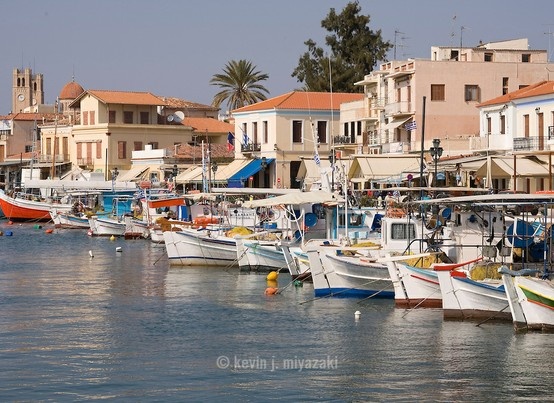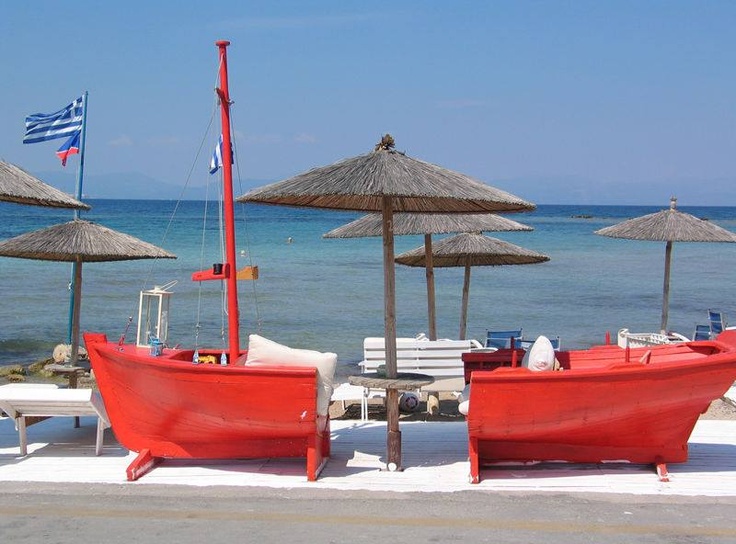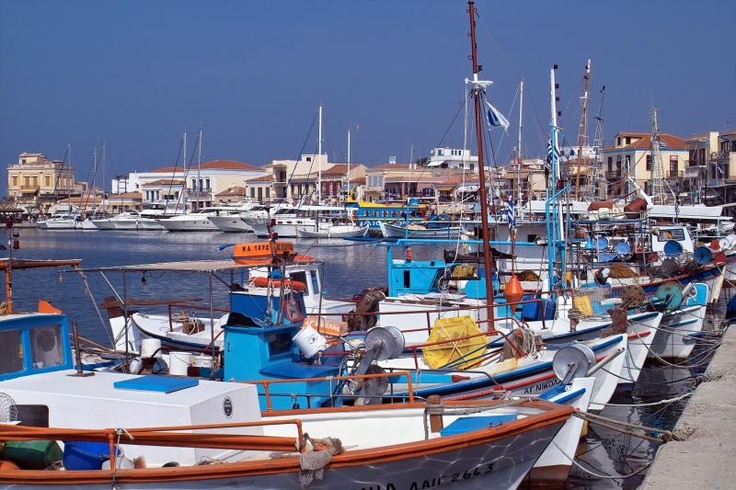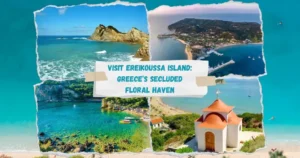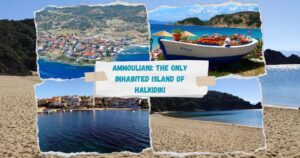Discover Aegina: A Magical Island Escape in Greece
Just a short ferry ride away from the bustling capital of Athens lies an island that somehow manages to remain both easily accessible and blissfully off the typical tourist radar, Aegina. This small gem in the Saronic Gulf is where olive groves meet ancient ruins, fishing villages unfold into turquoise harbors, and time seems to stretch a little slower. Unlike Santorini or Mykonos, Aegina isn’t about flashy beach clubs or cruise ships unloading thousands of visitors. It’s about authenticity, connection, and quietly absorbing the Greek way of life. This makes Aegina ideal for travelers who crave a slower rhythm, hidden cultural treasures, and the kind of hospitality that feels like being welcomed home.
Arrival: Getting to Aegina Island
The ease of reaching Aegina is one of its strongest advantages. From the Port of Piraeus in Athens, several ferry options depart daily, with the standard ferry taking around 1 hour and 15 minutes, and the high-speed ferry cutting that time down to just 40 minutes. Tickets range from €9 to €15 one-way, depending on the ferry type and season. No need to book far in advance unless traveling during a local holiday. Once on the island, the main port of Aegina Town is your first introduction—lined with colorful neoclassical buildings, waterfront cafés, and bobbing fishing boats, it sets the scene for a relaxing yet culturally rich visit.
Aegina Town: Markets, Marina, and Local Life
Aegina Town is more than just a transport hub; it’s the island’s heart. Begin your exploration here, perhaps with a morning stroll along the port where fishermen sell their catch directly from boats. Pop into a local bakery for a spanakopita or try fresh pistachios—the island’s most famous product—at one of the stands selling everything from roasted varieties to pistachio butter. If you’re visiting on a Sunday, don’t miss the street market where locals sell olives, handmade textiles, and herbs from the hills. There’s also the Fish Market behind the waterfront, where you’ll witness real daily island life in motion. Dining here is a treat—head to Skotadis or Tsias for grilled octopus, squid ink pasta, and a chilled glass of local wine. Expect to pay around €15–20 per person for a filling meal.
Ancient Ruins: The Temple of Aphaia
While Aegina is small, it boasts one of Greece’s most impressive ancient temples—the Temple of Aphaia. Located on a pine-covered hill in the northeastern part of the island, this Doric temple dates back to the 5th century BC and forms a historical triangle with the Parthenon in Athens and the Temple of Poseidon at Cape Sounion. The site is remarkably preserved, and visiting during the early morning or late afternoon allows you to take in the peaceful setting with minimal crowds. Entry costs just €6, and you can explore the area freely. Bring a hat, water, and wear walking shoes—there’s minimal shade and the stones can be slippery.
Hidden Villages and Inland Charms
Venture inland and you’ll find villages where tourism still feels like a whisper. Palaiochora, often called the “Mystras of Aegina,” is a ghost village with dozens of abandoned Byzantine churches dotting a hillside. It’s perfect for quiet walks, each small chapel offering its own mysterious charm. Then there’s Anitseo and Mesagros, traditional villages with narrow lanes, stone houses, and small family-run tavernas. If you’re hiking-inclined, the paths between these villages wind through olive groves and pine forests, with panoramic views across the Saronic Gulf. Bring water, as shops are limited, and dress comfortably for uneven terrain.
Beaches: Serenity by the Sea
Aegina’s beaches are not the long, endless shores of the Cyclades, but they offer a variety of atmospheres to suit different moods. For something lively, head to Agia Marina, a sandy beach with sunbeds, watersports, and beach bars. Prices for a sunbed and umbrella are about €7–10 for the day. For quieter options, Souvala and Vagia provide pebbled coves and gentle waves ideal for a slow swim. Want total solitude? Ask a local for directions to Klima or Portes, small hidden bays accessible via dirt roads or by boat. Always bring your own towel, sunscreen, and water if heading to the less developed spots.
Pistachios, Taverns, and Island Flavors
Pistachios in Aegina aren’t just food—they’re part of the island’s identity. You’ll find them in almost every form imaginable: salted, honey-glazed, crushed into pesto, and even baked into cakes. Try the pistachio ice cream from Aiakeion café—it’s a favorite among locals and visitors alike. Most taverns in Aegina serve hearty, simple meals with fresh ingredients, and the portions tend to be generous. For an authentic, budget-friendly experience, try Steki tou Nikou in the village of Portes where meals cost around €10 and everything from the wine to the cheese is made in-house. For seafood, head to Perdika, a picturesque village where the tavernas overlook the water and grilled sardines, sea urchin salad, and fried calamari dominate the menu.
Where to Stay: Cozy Stays and Seaside Views
Accommodation in Aegina caters more to the laid-back traveler than the luxury-seeker. You won’t find five-star resorts, but there are charming guesthouses, boutique hotels, and family-run apartments throughout the island. In Aegina Town, places like Rastoni Hotel offer garden views and peace just minutes from the port, with prices starting at €60–€80 per night in the low season. For beach proximity, Agia Marina has numerous small hotels and studios, ideal for travelers looking to wake up steps from the sea. If you’re traveling in peak season (July–August), booking in advance is smart, especially if you prefer places with a view.
Island Transport: Getting Around Aegina
Although Aegina is small, public buses can get you to most main villages and beach areas. Tickets cost around €2–€3 depending on the distance. However, for more freedom—especially if you want to reach hidden beaches or explore inland villages—a scooter or small rental car is your best option. Rentals start at about €20/day for scooters and €35/day for small cars. Roads are generally in good condition, but watch out for narrow village lanes and occasional unmarked turns. Cycling is also an option if you’re fit, especially in cooler months like April, May, or October.
When to Visit: Seasons and Local Life
The best time to visit Aegina is between April and early June, or September to October. These months offer mild weather, blooming landscapes, and fewer tourists. July and August bring the heat and crowds, particularly from Athenians seeking weekend escapes. If you’re interested in experiencing local culture, time your trip with the Fistiki Festival in September—a lively pistachio celebration with food stalls, music, and crafts. It’s one of the few times the island feels full of energy, yet it still retains its small-town charm.
Final Thoughts: Why Aegina is a Hidden Treasure
Aegina is not a place of grand spectacle, and that’s precisely its magic. It’s an island where you can walk through ruins with no one else in sight, sip wine in a village square where everyone knows each other, and swim in clear waters without the soundtrack of crowded beach bars. It’s close enough to Athens for a day trip, yet rich enough in experiences to fill a week or more. Whether you’re a solo traveler seeking calm, a couple looking for quiet romance, or a curious explorer drawn to authentic, lesser-known places—Aegina offers the kind of Greek experience that feels both personal and unforgettable. And perhaps that’s the island’s greatest treasure: its ability to surprise you without trying too hard.



